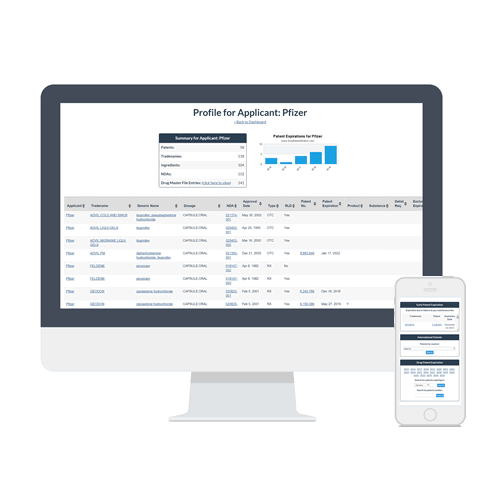
One issue continues to loom large in healthcare: the skyrocketing costs of pharmaceuticals. This challenge has become a significant hurdle for managed healthcare organizations, patients, and policymakers alike. As we delve into this complex topic, we’ll explore the various factors contributing to rising drug prices, their impact on the healthcare system, and potential solutions to address this pressing concern.
Table of Contents
The Current State of Pharmaceutical Costs
The pharmaceutical industry has been under intense scrutiny in recent years due to the rapid increase in drug prices. According to a report by the IQVIA Institute for Human Data Science, spending on prescription drugs in the United States reached a staggering $374 billion in 2023, marking a 5.7% increase from the previous year. This trend shows no signs of slowing down, with projections indicating that drug spending could surpass $500 billion by 2028.
Factors Driving the Cost Surge
Several factors contribute to the rising costs of pharmaceuticals, creating a complex web of challenges for managed healthcare organizations:
- Research and Development Expenses: Pharmaceutical companies often cite the high costs of drug development as a justification for steep prices. On average, it takes about 10-15 years and $2.6 billion to bring a new drug to market.
- Patent Protection: Once a drug is approved, companies have a limited time to recoup their investment before generic versions can enter the market. This exclusivity period often leads to high initial prices.
- Limited Competition: In some therapeutic areas, there may be few alternatives, allowing manufacturers to set prices with little market pressure.
- Regulatory Environment: The complex approval process and stringent regulations can increase costs and time-to-market for new drugs.
- Marketing and Advertising: Pharmaceutical companies spend billions on marketing their products, which ultimately gets factored into drug prices.
The Impact on Managed Healthcare
The rising costs of pharmaceuticals have far-reaching consequences for managed healthcare organizations:
- Increased Premiums: To offset higher drug costs, insurers often raise premiums, making healthcare less affordable for many Americans.
- Formulary Management Challenges: Pharmacy benefit managers (PBMs) face difficult decisions when determining which drugs to include in formularies, balancing cost considerations with patient needs.
- Cost-Sharing Burdens: Higher drug prices often lead to increased out-of-pocket expenses for patients, potentially affecting medication adherence and health outcomes.
- Budget Constraints: Healthcare providers and hospitals must allocate more resources to pharmaceutical spending, potentially limiting investments in other areas of care.
“The unsustainable growth in drug prices is not only a burden on patients but also a significant challenge for the entire healthcare ecosystem. We need collaborative solutions that balance innovation with affordability.” – Dr. Sarah Johnson, Chief Medical Officer, National Health Alliance
Strategies to Address Rising Pharmaceutical Costs
Managed healthcare organizations are employing various strategies to tackle the challenge of rising drug costs:
1. Value-Based Contracting
Value-based contracts between payers and pharmaceutical companies tie drug prices to patient outcomes. This approach aims to ensure that payers and patients receive value for their investment in high-cost medications.
Implementation Challenges
- Defining and measuring outcomes
- Data collection and analysis
- Regulatory considerations
Success Stories
Several managed care organizations have successfully implemented value-based contracts. For instance, Harvard Pilgrim Health Care reported a 17% reduction in cardiovascular-related hospitalizations after implementing a value-based contract for a cholesterol-lowering medication.
2. Biosimilar Adoption
Encouraging the use of biosimilars – highly similar versions of biologic drugs – can lead to significant cost savings. The FDA has approved numerous biosimilars in recent years, offering more affordable alternatives to expensive biologic treatments.
Barriers to Adoption
- Physician and patient education
- Reimbursement policies
- Patent litigation
Potential Savings
A study by the RAND Corporation estimates that biosimilars could reduce direct spending on biologic drugs by $54 billion between 2017 and 2026.
3. Pharmacy Benefit Management Optimization
Managed healthcare organizations are working closely with PBMs to optimize drug spending through:
- Negotiating better rebates and discounts
- Implementing tiered formularies
- Promoting generic substitution
- Utilizing step therapy and prior authorization
Case Study: Express Scripts
Express Scripts, one of the largest PBMs in the United States, reported that its management strategies helped clients save $45 billion on prescription drug costs in 2023.
4. Precision Medicine and Targeted Therapies
Investing in precision medicine can help reduce overall healthcare costs by ensuring that patients receive the most effective treatments based on their genetic profiles.
Benefits of Precision Medicine
- Improved treatment efficacy
- Reduced adverse events
- Decreased healthcare utilization
Challenges
- High initial costs of genetic testing
- Limited availability of targeted therapies
- Reimbursement issues
5. Policy and Regulatory Initiatives
Managed healthcare organizations are advocating for policy changes to address rising drug costs:
- Drug Price Transparency: Requiring manufacturers to disclose pricing information and justification for increases.
- Medicare Negotiation: Allowing Medicare to negotiate drug prices directly with manufacturers.
- Importation: Exploring safe importation of lower-cost drugs from other countries.
- Patent Reform: Addressing tactics used to extend patent protection and delay generic competition.
The Role of Technology in Managing Pharmaceutical Costs
Advancements in technology are providing new tools for managed healthcare organizations to address rising drug costs:
1. Artificial Intelligence and Machine Learning
AI and ML algorithms can help:
- Predict drug pricing trends
- Identify cost-effective treatment pathways
- Optimize formulary management
- Detect fraud and abuse in prescription drug claims
2. Blockchain for Supply Chain Management
Blockchain technology can improve transparency and efficiency in the pharmaceutical supply chain, potentially reducing costs associated with drug distribution and counterfeiting.
3. Real-World Evidence (RWE) Platforms
RWE platforms collect and analyze data from diverse sources to:
- Assess drug effectiveness in real-world settings
- Inform value-based contracting decisions
- Guide formulary placement and utilization management strategies
The Patient Perspective: Balancing Access and Affordability
While managed healthcare organizations grapple with rising drug costs, it’s crucial to consider the impact on patients:
1. Medication Adherence
High out-of-pocket costs can lead to poor medication adherence, resulting in worse health outcomes and potentially higher overall healthcare costs.
2. Financial Toxicity
The concept of “financial toxicity” describes the adverse effects of high healthcare costs on patients’ quality of life and treatment decisions.
3. Health Disparities
Rising drug costs can exacerbate existing health disparities, particularly affecting low-income and minority populations.
“We must never lose sight of the patient in our efforts to control drug costs. Affordability and access to life-saving medications should be at the forefront of our strategies.” – Maria Rodriguez, Patient Advocate, Healthcare for All Coalition
Collaborative Solutions: A Path Forward
Addressing the challenge of rising pharmaceutical costs requires a collaborative approach involving all stakeholders:
1. Public-Private Partnerships
Initiatives that bring together government agencies, pharmaceutical companies, and managed healthcare organizations can foster innovation in drug development and pricing models.
2. Global Cooperation
International collaboration on drug pricing and development can help distribute costs and risks more equitably across markets.
3. Patient Engagement
Involving patients in decision-making processes can lead to more effective and patient-centered solutions to drug pricing challenges.
Future Outlook: Trends Shaping Pharmaceutical Costs
As we look to the future, several trends are likely to influence pharmaceutical costs and managed healthcare strategies:
1. Gene Therapies and Personalized Medicine
The advent of gene therapies and increasingly personalized treatments may lead to high upfront costs but potentially significant long-term savings.
2. Digital Therapeutics
The rise of digital therapeutics could provide cost-effective alternatives or complements to traditional pharmaceuticals for certain conditions.
3. Global Health Crises
Events like the COVID-19 pandemic highlight the need for flexible and resilient drug pricing and distribution systems.
4. Aging Population
An aging population in many developed countries will continue to drive demand for pharmaceuticals, potentially exacerbating cost pressures.
Key Takeaways
- Rising pharmaceutical costs pose a significant challenge for managed healthcare organizations, impacting premiums, formulary management, and overall healthcare affordability.
- Multiple factors contribute to increasing drug prices, including R&D costs, patent protection, and limited competition.
- Strategies to address this issue include value-based contracting, biosimilar adoption, PBM optimization, and precision medicine initiatives.
- Technology, such as AI and blockchain, offers new tools for managing pharmaceutical costs.
- Balancing patient access and affordability remains crucial in addressing this challenge.
- Collaborative solutions involving all stakeholders are essential for sustainable progress in controlling drug costs.
- Future trends, including gene therapies and digital therapeutics, will continue to shape the landscape of pharmaceutical costs and managed healthcare strategies.
FAQs
- Q: How do rising pharmaceutical costs affect insurance premiums?
A: Rising drug costs often lead to increased insurance premiums as insurers attempt to offset their expenses. This can make healthcare coverage less affordable for many individuals and employers. - Q: What is a pharmacy benefit manager (PBM), and how do they impact drug costs?
A: PBMs are companies that manage prescription drug benefits for insurers and employers. They negotiate prices with drug manufacturers, create formularies, and implement cost-containment strategies. Their role can significantly influence drug costs and access for patients. - Q: How does value-based contracting work in pharmaceutical pricing?
A: Value-based contracts tie drug prices to patient outcomes. If a medication doesn’t achieve predetermined health outcomes, the pharmaceutical company may offer rebates or discounts. This approach aims to ensure that payers and patients receive value for their investment in high-cost medications. - Q: What are biosimilars, and how can they help reduce drug costs?
A: Biosimilars are highly similar versions of biologic drugs. They can offer comparable efficacy at a lower cost, potentially leading to significant savings for healthcare systems and patients. - Q: How might artificial intelligence and machine learning impact pharmaceutical costs in the future?
A: AI and ML can help predict drug pricing trends, identify cost-effective treatment pathways, optimize formulary management, and detect fraud in prescription drug claims. These technologies have the potential to improve efficiency and reduce costs throughout the pharmaceutical supply chain and healthcare delivery system.
Sources cited:
https://www.iqvia.com/insights/the-iqvia-institute/reports/the-use-of-medicines-in-the-us-2023
https://www.phrma.org/resource-center/Topics/Research-and-Development/Biopharmaceutical-Research-Development-The-Process-Behind-New-Medicines
https://www.harvardpilgrim.org/public/news-detail?nt=HPH_News_C&nid=1471912468708
https://www.rand.org/pubs/perspectives/PE264.html
https://www.express-scripts.com/corporate/articles/express-scripts-2023-drug-trend-report


